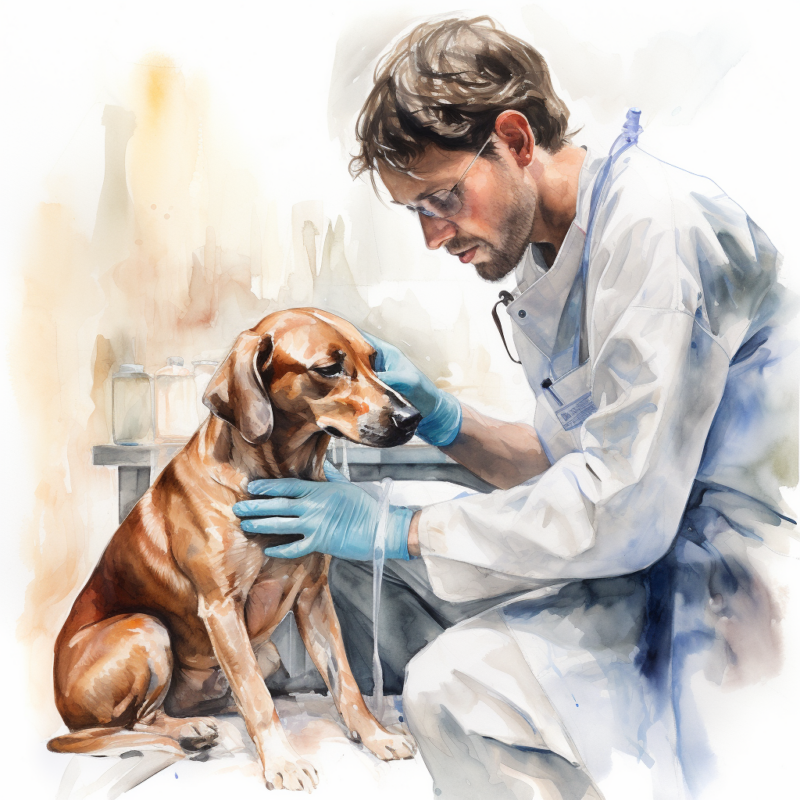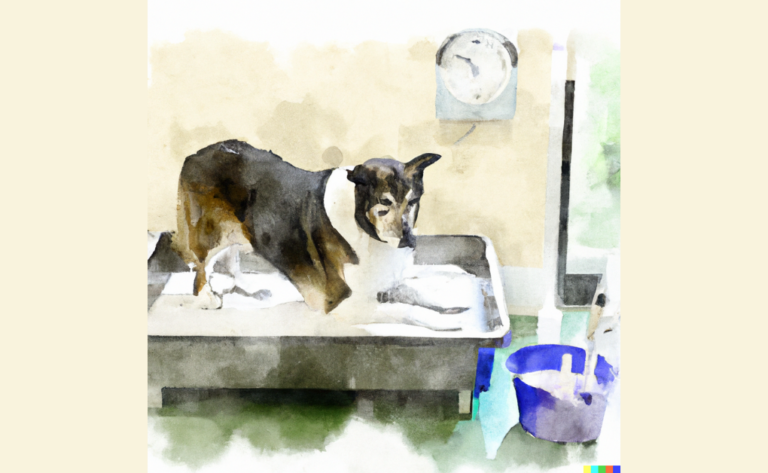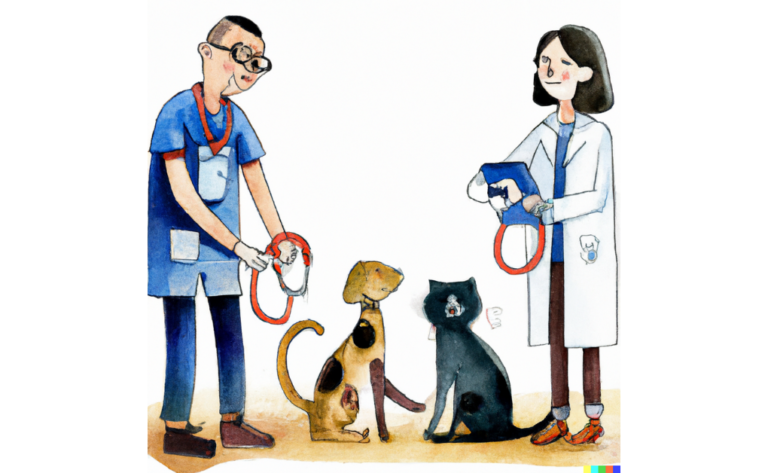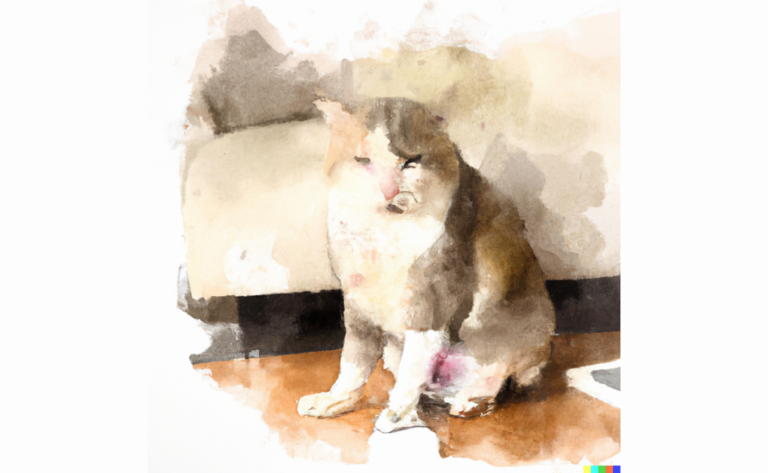How To Care For A Healthy Puppy
Introduction
When Sarah brought her lively, energetic puppy named Bailey home, she quickly realized that raising a happy and healthy pup was a daunting task. Although she was smitten with her new furry friend, Sarah needed guidance on properly caring for Bailey as he grew.
Caring for a healthy, growing puppy can be a rewarding experience, but it can also pose challenges, particularly for first-time pet owners. This complete guide offers essential tips and advice to ensure your new furry family member receives the best possible start in life. We’ll discuss nutrition, grooming, socialization, and veterinary care, equipping you with the tools and knowledge to confidently provide good puppy care. So let’s jump into the world of puppy care!
Signs of a Healthy Puppy
A healthy puppy will display numerous positive signs, reflecting their good physical and mental health. Some of these signs, along with additional information, include:
- Bright, clear eyes: Healthy puppies should have eyes free from discharge, redness, or cloudiness. Regularly monitoring their eyes can help prevent potential health problems and detect issues like conjunctivitis early on.
- Clean, pink ears: A puppy’s ears should be clean and free from foul odor, with no signs of redness or inflammation. Regular ear checks can help spot early symptoms of an ear infection or mite infestation.
- Shiny, clean coat: A healthy coat indicates good nutrition and grooming. It should be shiny and free from excessive shedding, bald patches, or skin irritations like dog flea infestations. Regular grooming sessions can help keep their coat in top condition.
- Good appetite: Puppies should be eager to eat and maintain a consistent, healthy weight. Choosing the right food for your puppy’s age, breed, and size is essential for proper nutrition and supporting their growing bodies.
- High energy levels: A healthy puppy is typically energetic, playful, and curious. They should be active and enjoy physical activities, like visiting a dog park, engaging in playtime, and exploring their surroundings.
- Regular bowel movements: Puppies should have regular, firm bowel movements free from parasites, blood, or mucus. Monitoring their stool can help identify intestinal parasites or other health issues that must be addressed promptly.
- Proper hydration: A healthy puppy should drink water regularly to maintain adequate hydration, contributing to their overall health and well-being. Dehydration can lead to severe complications, so ensure clean water is always available.
- Normal gum color: Gums should be pink and moist, with a quick capillary refill time when gently pressed. Checking your puppy’s gums can help determine underlying issues, such as anemia or poor circulation.
- No nasal discharge: A healthy puppy should have a clean nose without shot or crustiness. Any unusual nasal discharge could signal a health problem like an upper respiratory infection that requires veterinary attention.
- Steady growth: Puppies should grow steadily, increasing their weight and size according to their breed and age. Regular weigh-ins and monitoring growth are essential for pet owners to ensure their puppies are developing healthily and to catch any growth abnormalities early on.
Keeping an eye on these signs in your puppy ensures their continued good health. If you notice any changes or have concerns about your puppy’s well-being, consult your veterinarian. A proactive approach to your puppy’s care prevents potential health issues and promotes a healthy life.
Keep Your Puppy Healthy
Your puppy’s health is crucial, forming the basis for its well-being, happiness, and longevity. In addition, a healthy puppy is likelier to develop into a well-adjusted adult dog with fewer behavioral and medical issues. Here are some essential aspects to concentrate on, ensuring your puppy’s health and well-being, explained in detail for pet owners:
- Balanced nutrition: Provide your puppy with high-quality, age-appropriate dog food that contains all the essential nutrients they need for growth and development. Please consult your vet for personalized food recommendations based on your puppy’s breed and size, ensuring a balanced diet that suits their needs.
- Regular exercise: Keep your puppy active by engaging them in age-appropriate activities, which help maintain healthy muscles, joints, and body weight. These activities can include daily walks, playtime in the backyard, or interactive toys that stimulate their minds and provide physical exercise.

- Socialization: Introduce your puppy to various environments, people, and other animals, helping them develop confidence, reduce anxiety, and become friendly adult dogs. Early socialization can include puppy classes, meeting friends and family, or visiting pet-friendly places where they can interact with other dogs.
- Grooming: Maintain your puppy’s hygiene by regularly brushing their coat, cleaning their ears, trimming their nails, and bathing them as needed. Proper grooming prevents infections and infestations and helps you identify any potential skin issues early on.
- Dental care: Start a routine early in your puppy’s life, including brushing their teeth, providing dental chews, or scheduling professional dental cleanings. Consistent dental care helps prevent oral health issues such as gum disease, tooth decay, and bad breath.
- Puppy vaccinations: Follow your veterinarian’s recommended vaccination schedule to ensure your puppy receives all necessary vaccines. Vaccinations protect them from common diseases, and your puppy will need a series of vaccinations for complete protection.
- Parasite prevention: Administer appropriate flea, tick, and heartworm preventatives as your veterinarian advises. These preventatives protect your puppy from parasites and the diseases they transmit, ensuring their long-term health.
- Regular veterinary check-ups: Monitor your puppy’s growth and development by scheduling regular veterinary visits. Routine check-ups help address any health concerns and keep vaccinations up-to-date. In addition, always bring your new puppy to the vet for a comprehensive examination shortly after adoption.
- Spaying or neutering: Spay or neuter your puppy to prevent unwanted litters, reduce the risk of specific health issues, and promote responsible pet ownership. Discuss the best time for this procedure with your veterinarian.
- Puppy-proofing your home: Create a safe environment for your puppy by removing potential hazards such as toxic plants, electrical cords, and small objects they could swallow. Secure cabinets with cleaning supplies or medications, and provide a designated space where your puppy can play and rest safely.
By following these guidelines and working closely with your veterinarian, you can ensure your puppy’s health and happiness as they grow into adulthood.
Caring For a New Puppy
Caring for a puppy involves understanding their needs and ensuring their safety, health, and happiness. Here are some dos and don’ts to consider when caring for your new furry companion:
Dos:
- Provide a balanced, age-appropriate diet: Consult your veterinarian for the best food for your puppy’s breed and size.
- Establish a consistent routine: Puppies thrive on predictability, so maintain regular feeding, walking, playtime, and sleeping schedules.
- Do socialize your puppy early: Expose your puppy to various environments, people, and other animals to help them develop confidence and become well-adjusted adult dogs.
- Do provide age-appropriate exercise: Regular exercise is essential for a puppy’s physical and mental well-being. Tailor the exercise to your puppy’s breed, age, and energy level.
- Invest in puppy training: Early obedience training and positive reinforcement techniques help establish good behaviors and set the foundation for a well-mannered adult dog.
- Provide mental stimulation: Engage your puppy in interactive games, puzzle toys, and training sessions to keep their mind sharp and prevent boredom.
- Do puppy-proof your home: Remove potential hazards, such as toxic plants, electrical cords, and small objects your puppy could swallow.
- Do schedule regular veterinary visits: Keep up with vaccinations, parasite prevention, and routine health check-ups to ensure your puppy stays healthy.
- Practice patience and understanding: Puppies will make mistakes; be patient and consistent in your training and communication.
Don’ts:
- Don’t leave your puppy unsupervised for extended periods: Puppies require supervision to ensure their safety and prevent accidents or destructive behaviors.
- Don’t use physical punishment: Physical punishment is ineffective and can lead to fear or aggression. Instead, use positive reinforcement techniques to encourage good behavior.
- Don’t overfeed your puppy: Overfeeding can lead to obesity and other health issues. Stick to the recommended portion sizes and avoid giving table scraps.
- Don’t ignore signs of illness: If your puppy displays any signs of illness, consult your veterinarian promptly.
- Don’t force your puppy into uncomfortable situations: Allow your puppy to approach new experiences at their own pace, and avoid overwhelming them with too much stimulation at once.
- Don’t expect too much too soon: Puppies have short attention spans and are still learning. So be patient and consistent in your training efforts.
Following these dos and don’ts can help ensure your puppy’s well-being and foster a strong bond between you and your new furry friend.
Crate Training
Crate training teaches a dog to accept and feel comfortable in a crate or enclosed space. The goal is to create a safe and secure environment that the dog associates with relaxation and comfort. This method is often used for house training and providing a safe space for dogs when they need to be confined for short periods, such as during travel or when visitors are present. Crate training has several benefits, making it an essential aspect of dog training:

- House training: Crate training can be an effective way to house-train a puppy or adult dog. Dogs naturally do not want to soil their sleeping area, so confining them to a crate when you cannot supervise them helps them hold their bladder and bowel movements until they are let out.
- Safety and security: A crate provides a secure, den-like space where your dog can feel safe and relaxed. This is particularly useful for dogs that may feel anxious or stressed in certain situations, such as during thunderstorms, fireworks, or when visitors are present.
- Travel: Crate training helps dogs feel comfortable and secure while traveling in a vehicle. A crate can prevent your dog from roaming around the car, reducing the risk of injury in the event of an accident and minimizing distractions for the driver.
- Vet visits and boarding: A crate-trained dog is more likely to feel comfortable and less stressed during visits to the veterinarian or when staying at a boarding facility, as they are already accustomed to being confined in a familiar space.
- Management of destructive behaviors: Crate training can help manage destructive behaviors by providing a confined space where your dog can be safely left unsupervised when you cannot watch them.
- Recovery from surgery or illness: A crate can provide a calm and safe space for a dog recovering from surgery or illness, helping to prevent them from overexerting themselves or causing injury.
It’s important to note that crate training should always be done gradually and positively, with the dog being rewarded for willingly entering the crate and never forced or punished. The crate should never be used as a punishment or for extended periods, as this can cause distress and anxiety for your dog.
Spay or Neuter
Spaying or neutering refers to the surgical procedures that sterilize dogs to prevent them from reproducing. Spaying is the process of removing the ovaries and uterus of a female dog, while neutering refers to the removal of a male dog’s testicles. These procedures are performed by veterinarians and are considered safe and routine.
Spaying or neutering your dog has numerous benefits, making it an essential aspect of responsible pet ownership:
- Population control: Spaying and neutering help control the pet population, reducing the number of unwanted puppies and dogs that end up in shelters or as strays. Overpopulation can lead to overcrowding in shelters, which may result in the euthanasia of healthy animals due to limited resources.
- Health benefits: Spaying and neutering have been shown to reduce the risk of certain health issues in dogs. For example, spaying a female dog before her first heat cycle can significantly reduce the risk of mammary cancer while neutering a male dog can prevent testicular cancer and reduce the risk of prostate problems.
- Behavioral improvements: Spaying and neutering can lead to improved behavior in dogs. Neutered male dogs are often less aggressive, less likely to roam and mark territory, and exhibit fewer undesirable sexual behaviors. In addition, spayed female dogs will not go into heat, which can prevent the attraction of male dogs and the associated behaviors, such as vocalizing and marking.
- Cost-effective: The cost of spaying or neutering your dog is often less than the expenses associated with raising a litter of puppies or dealing with the potential health issues that can arise in unaltered dogs.
- Community benefits: Spaying and neutering help reduce the number of stray dogs in communities, which can minimize the risk of dog bites, traffic accidents, and the spread of diseases.
It is essential to consult with your veterinarian about the appropriate age and timing for spaying or neutering your dog. The recommendations may vary depending on factors such as breed, size, and overall health.
ID Tag and Microchipping
ID tags and microchipping are crucial tools in ensuring the safety and security of your dog. Both methods serve as a means of identification, increasing the likelihood of reuniting lost or stolen dogs with their owners. Here’s why ID tags and microchipping are so important for dogs:
ID Tags
An ID tag is a small, metal or plastic tag attached to your dog’s collar that displays essential information, such as the dog’s name, owner’s name, address, and contact number. If your dog gets lost, the ID tag makes it easy for anyone who finds them to contact you immediately. Additionally, ID tags can include critical medical information, such as vaccination status or allergies, which can be helpful in an emergency situation.
Microchipping
A microchip is a tiny electronic device about the size of a grain of rice implanted under your dog’s skin, usually between the shoulder blades. Each microchip has a unique identification number that can be scanned and traced back to the owner through a microchip database. Unlike an ID tag, which can be lost or removed, a microchip provides your dog identification.
The importance of ID tags and microchipping for dogs include:

- Increased chance of reunion: If your dog gets lost or stolen, having an ID tag and microchip significantly increases the chances of returning them to you. Shelters, veterinarians, and animal control officers can use microchip scanners to identify your dog and access your contact information.
- Proof of ownership: In cases of theft or disputes over ownership, a microchip can prove that the dog belongs to you.
- Legal compliance: In some jurisdictions, microchipping is mandatory for dogs, and owners may face fines or penalties if their dogs are not chipped.
- Peace of mind: Knowing that your dog has an ID tag and microchip gives you peace of mind, knowing there is a higher likelihood of your pet being returned to you if they get lost.
Remember to update your contact information on the ID tag and microchip database, as outdated information can hinder reuniting you with your dog. It is also essential to have your dog’s microchip scanned periodically by a veterinarian to ensure it still functions correctly.
Feeding Growing Puppies
Feeding your growing puppy requires careful attention to its nutritional needs. Here’s how and what you should feed your puppy to support their growth and development while also helping to avoid behavioral problems down the road:
- Choose high-quality, age-appropriate food: Look for puppy food specifically formulated to meet the nutritional requirements of young puppies. Ensure the food is labeled as “complete and balanced” and meets the AAFCO (Association of American Feed Control Officials) guidelines for growth and development. Talk to your vet about the best options for your pet.
- Consider your puppy’s breed and size: Different breeds have unique nutritional requirements. For example, large-breed puppies need a diet with the appropriate calcium-to-phosphorus ratio to support healthy bone growth and prevent skeletal issues. On the other hand, small-breed puppies may need more calorie-dense food to support their faster metabolism.
- Feed multiple small meals: Puppies have small stomachs and require more frequent meals than adult dogs. Feed your puppy 3-4 meals daily, gradually reducing the number of meals as they age. By the time they reach six months, most puppies can transition to two meals per day.
- Measure the food: Overfeeding can lead to obesity and other health issues, such as damage to your dog’s teeth. Follow the feeding guidelines on the puppy food packaging, or consult your veterinarian to determine the appropriate portion size for your puppy. Use a measuring cup to ensure proper portions.
- Avoid table scraps and unhealthy treats: Feeding table scraps can lead to an unbalanced diet and may encourage begging behavior. Instead, limit treats to no more than 10% of your puppy’s daily caloric intake, and opt for healthy, low-calorie options.
- Provide fresh water: Ensure your puppy always has access to clean water, essential for maintaining good health.
- Monitor your puppy’s growth and body condition: Regularly assess your puppy’s body condition and adjust their food intake accordingly. For example, a healthy puppy should have a visible waist and ribs that are not prominently visible but can be felt under a thin layer of fat.
- Transition to adult food gradually: As your puppy approaches adulthood (around 12 months for small breeds and 18-24 months for giant breeds), transition to adult dog food. Mix increasing amounts of the new food with the old food over 7-10 days to avoid digestive upset and get your puppy accustomed to the change.
Always consult your veterinarian for personalized recommendations on feeding your puppy, as individual needs may vary based on factors like breed, size, activity level, and health status. Your vet can help guide you through this process and ensure the best care for your growing puppy.
Average Growth and Development of a Healthy Puppy

On average, puppies of small and medium breeds typically attain full physical maturity between 10-12 months, while larger and giant breeds may take 18-24 months. Over this period, they experience consistent growth, improving their strength, coordination, and body composition, making it a crucial time for puppy health and development.
During this development period, it’s essential to watch out for signs of any abnormal physical or behavioral traits that may indicate underlying medical issues. This includes anything from limping to excessive barking or aggression. Puppy training, such as enrolling in a puppy class, can help address and prevent behavioral issues. If you notice any unusual behavior, consult your vet immediately, as they can provide veterinary care and recommend interventions like dog laser therapy if necessary.
Monitoring your pup’s weight during this time is vital to help avoid serious health issues. As their bodies grow, their metabolism increases proportionately, so they need more food than what was required when they were younger. Therefore, it’s crucial to adjust their feeding amounts accordingly and provide a comfortable dog bed for rest. Keep in mind that potty training is also an essential aspect of raising a healthy puppy. Take your new puppy out to potty at regular intervals, and remember that the number of times to take your puppy out to potty will change as they grow.
By closely monitoring your puppy’s growth and providing appropriate care, you can ensure they develop into a healthy, well-adjusted adult dog. As always, consult your veterinarian for personalized recommendations on your pet’s health and well-being.
Optimal Growth or Maximal Growth
Maximal growth and optimal growth in puppies refer to different growth rates that can significantly impact a puppy’s overall health and development.
Maximal growth is when a puppy grows at the fastest possible rate. This is usually achieved when puppies are fed high-energy diets that provide more calories than needed for optimal growth.
Advantages of Maximal Growth:
- Early physical maturity: Dogs experiencing maximal growth may reach the full physical size and maturity earlier than average. This can be an advantage for working dogs or dogs involved in competitions, as they can begin training and participate in events sooner.
- Impressive size and appearance: Maximal growth can result in a more giant and physically imposing dog, which may be desirable for owners seeking a pet for protection or as a status symbol.
Disadvantages of Maximal Growth:
- Increased risk of developmental orthopedic diseases: Rapid growth in large and giant breed puppies can lead to skeletal issues like hip, elbow, and other developmental orthopedic diseases.
- Obesity: Overfeeding puppies can lead to excessive weight gain and obesity, contributing to various health issues later in life.
- Imbalanced nutrition: Feeding a high-energy diet may provide more calories than required, leading to an imbalance in essential nutrients like calcium, phosphorus, and protein.
Optimal growth, on the other hand, is a more controlled rate of growth that prioritizes steady, healthy development. Puppies fed a balanced diet with appropriate calorie intake will grow optimally.
Advantages of Optimal Growth:
- Reduced risk of developmental orthopedic diseases: Controlled growth rates can help minimize the risk of skeletal issues in large and giant breed puppies.
- Healthier body condition: Puppies fed a balanced diet will have a healthier body condition, reducing the risk of obesity and related health issues.
- Balanced nutrition: Providing the right amount of calories and essential nutrients ensures that puppies receive the proper nutrition for their development.
Disadvantages of Optimal Growth:
- Slower growth: Puppies may grow at a slower rate compared to those fed high-energy diets. However, this is generally not a disadvantage, as it allows for a more controlled, healthy growth rate.
In conclusion, optimal growth is generally preferable for puppies, as it prioritizes steady, balanced development and reduces the risk of health issues associated with rapid growth. To ensure optimal growth, feed your puppy a balanced, age-appropriate diet, and consult with your veterinarian for personalized recommendations based on your puppy’s breed, size, and individual needs.
Beware of Potential Early Signs of Illness
Awareness of potential illnesses and their early warning signs is crucial for puppy owners, as it allows them to identify and address health issues before they become severe promptly. Early intervention can improve your puppy’s prognosis and quality of life and, in some cases, may even be life-saving. In addition, recognizing the signs of illness helps ensure that your puppy receives timely and appropriate veterinary care, which can prevent complications and promote faster recovery.
Potential early warning signs of illness in puppies include:
- Lethargy: A lack of energy or enthusiasm may indicate your puppy is unwell. Puppies are typically energetic and playful, so any change in their average activity level warrants attention.
- Loss of appetite: A sudden decrease in appetite or refusal to eat can indicate an underlying health issue.
- Vomiting and diarrhea: Occasional vomiting or diarrhea might not cause concern, but persistent or severe episodes could signal a more serious problem.
- Coughing or sneezing: Persistent coughing or sneezing may indicate a respiratory infection or an allergy.
- Discharge from eyes or nose: Discharge from the eyes or nose can indicate an infection or irritation.
- Changes in urination or defecation: Increased frequency, difficulty, or pain during urination or defecation can indicate a urinary tract infection, bladder stones, or gastrointestinal issues.
- Skin issues: Persistent itching, redness, hair loss, scabs, bumps, or rashes could be signs of allergies, parasites, or skin infections.
- Swollen or painful joints: Stiffness, limping, or reluctance to move might signal joint pain or inflammation, which could be due to an injury or an underlying condition like arthritis or hip dysplasia.
- Unexplained weight loss or gain: Sudden weight changes can indicate an underlying health issue, such as parasites, hormonal imbalances, or organ dysfunction.
- Behavioral changes: Sudden changes in your puppy’s behavior, such as increased aggression, anxiety, or vocalization, may signal discomfort or pain.
If you notice any of these early warning signs, it is essential to consult with your veterinarian as soon as possible. Regular check-ups and preventative care, including vaccinations and parasite control, can also help keep your puppy healthy and reduce the risk of illness.
Frequently Asked Questions
Disclaimer: The information provided on this veterinary website is intended for general educational purposes only and should not be considered as a substitute for professional veterinary advice, diagnosis, or treatment. Always consult a licensed veterinarian for any concerns or questions regarding the health and well-being of your pet. This website does not claim to cover every possible situation or provide exhaustive knowledge on the subjects presented. The owners and contributors of this website are not responsible for any harm or loss that may result from the use or misuse of the information provided herein.







